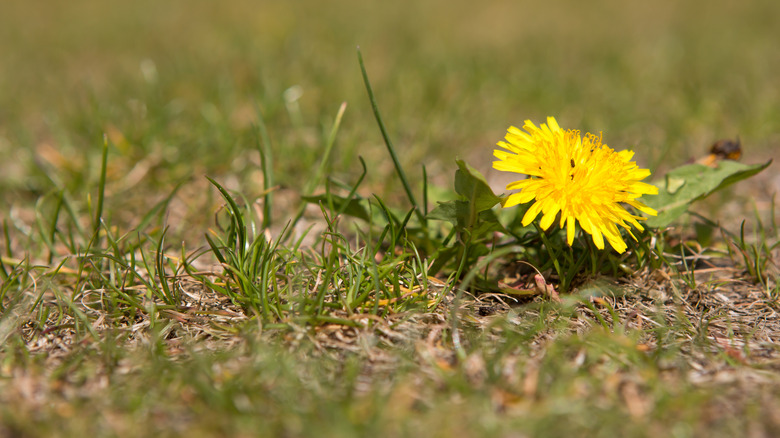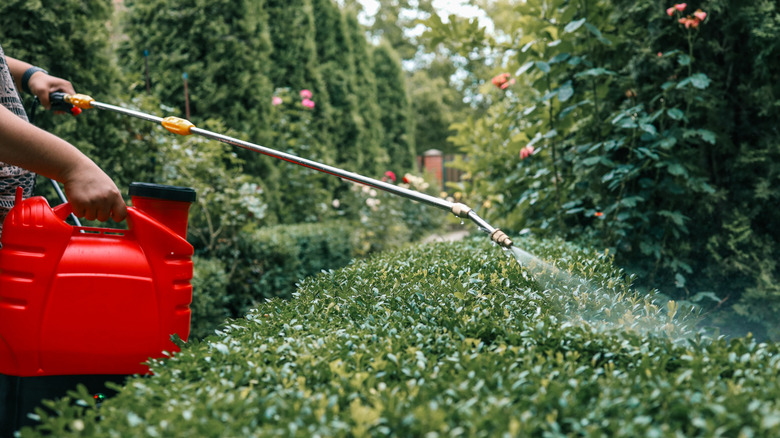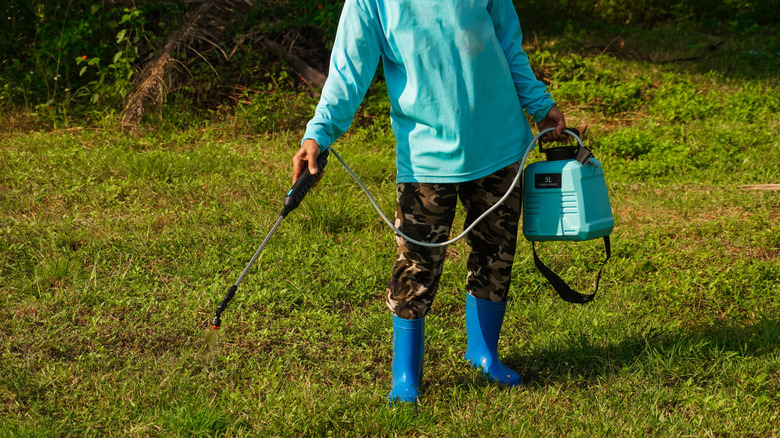Still Fighting Weeds With Vinegar? Here's Why It May Not Be Working As Well As You Think
Vinegar with a high concentration of acetic acid can be an effective alternative to chemical herbicides, the latter of which have the potential to harm both humans and the environment. While still widely used, weed killers like Roundup that contain glyphosate are banned in some U.S. states and countries around the world because of their links to cancer, and therefore are among weed killer products to steer clear of. Horticultural vinegar is a highly effective weed killer under certain conditions. If it's become a less-effective solution for you, several factors might be at play. For success, use the right concentration at the right time of day, reapply as needed, and be aware of the age and physical structure of the weeds you're killing.
The most effective vinegar-based herbicides contain 20% or 30% acetic acid, an amount much higher than the average 5% found in household vinegar. Acetic acid is a contact herbicide, meaning that it only kills the part of the plant it touches. Commercial acetic acid-based herbicides are available at your nursery or big box store. You can also purchase products marketed as cleaning vinegar or horticultural vinegar with a high concentration of acetic acid. Use these full strength or dilute them with water to a 20% concentration. Vinegar breaks down quickly in the soil, so it's unlikely it will make a permanent change to your soil's pH.
Improving the effectiveness of vinegar as an herbicide
While household vinegar with a 5% acetic acid concentration has been shown to kill very young weeds, a higher concentration has an 85% to 100% success rate with weeds at all stages of development. Some perennial weeds with established root systems can survive, because they can regrow from roots the vinegar potentially doesn't reach. Make sure you're using a product with at least 20% acetic acid.
Ideally, you should be spraying young weeds when they're at the two- to four-leaf stage of development. Apply vinegar to all of the leaves and the upper point of the weed. This removes the plant's ability to gather the resources to regrow. Some weed species are more susceptible to vinegar herbicides because of their leaf structure. Broadleaf weeds that angle upwards hold more vinegar and may direct the vinegar to young shoots. Plus, the leaves have more surface area to spray. Broadleaf weeds include ground ivy, chickweed, and lambsquarters. Vinegar is marginally effective on dandelions and thistle.
Acetic acid works best when it's hot and sunny. Wait 24 to 48 hours after rain to apply the solution, as the water can wash away the vinegar before it can do its job. Adding a surfactant to the mixture may make it more effective.
How acetic acid works, and a warning
Acetic acid works by damaging the plant's cells on contact, which in turn leads to the plant losing fluids and eventually completely drying out. It will affect any plant it touches, but loses its efficacy once it's on the ground. It won't leach into the soil and continue to kill roots. Using a contact herbicide like acetic acid is typically more labor intensive and less cost effective than a commercial, systemic herbicide, because contact herbicides may require more than one application to be successful.
Horticultural vinegar with its high concentration of acetic acid is dangerous to work with. On contact it's irritating to the eyes and the skin. It can permanently damage your corneas and burn your mouth and throat if ingested. If you're using it in a sprayer, inhaling the mist can damage your lungs. Wear long sleeves and pants, gloves, eye protection, and a mask when working with horticultural vinegar. If you're using a premixed commercial product containing acetic acid, read and follow the instructions on the warning label. If you mix your own weed killer from acetic acid and water, make sure to label the container and to keep it away from kids and pets.


